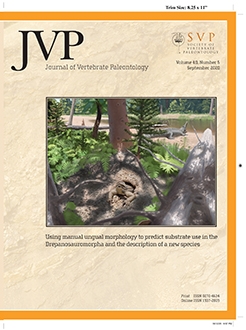The Paleogene–Neogene boundary is an important transitional time for the evolution of African fauna. Many taxa that evolved endemically in the Paleogene begin to wane in diversity, while new taxa, many of which will become exemplars of the modern African fauna, immigrate from Eurasia via newly opened terrestrial connections. The Paleogene–Neogene boundary is documented in the fossil record at Nakwai, in northern Kenya. Here we describe the mammalian carnivore fauna, which includes the earliest carnivoran records in Africa, and an interesting mix of Paleogene and Neogene hyaenodont taxa. The carnivoran fauna includes Jinomrefu lakwanza, gen. et sp. nov., the earliest barbourofelid in Africa, which has a transitional sabertooth morphology. An analysis of ecomorphological change in African mammalian carnivores across this boundary shows that hyaenodonts become more disparate in body size and more hypercarnivorous as they are displaced by invading carnivorans. This provides another test case for possible competition between carnivorans and hyaenodonts, a group that goes extinct in Africa and globally during the Neogene.
How to translate text using browser tools
5 January 2021
A Transitional Mammalian Carnivore Community from the Paleogene–Neogene Boundary in Northern Kenya
Anthony R. Friscia,
Mathew Macharwas,
Samuel Muteti,
Francis Ndiritu,
D. Tab Rasmussen
ACCESS THE FULL ARTICLE






